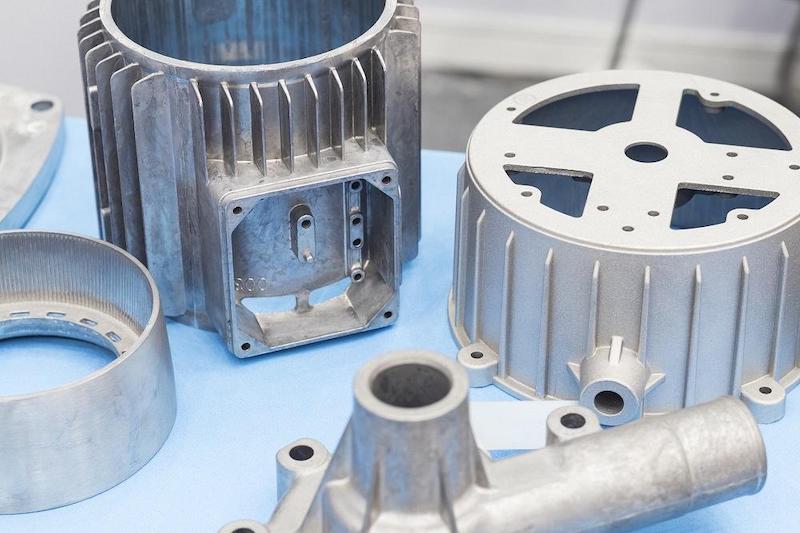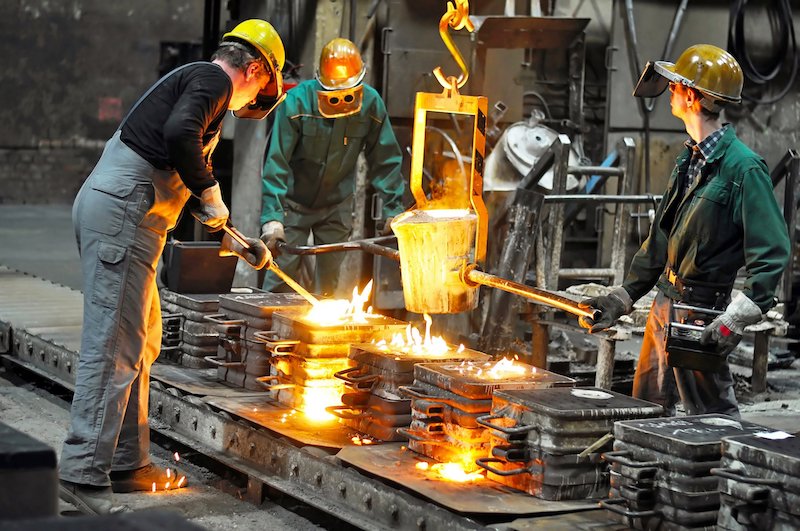Melted steel is poured into a mold through the course of the aluminum casting manufacturing process to produce components or merchandise with precise dimensions. Aluminum ingots or scraps are first melted in a furnace at temperatures better than 660 stages Celsius. That's the melting point of aluminum. After that, the molten aluminum is carefully poured into a mold, which can be constructed of sand, steel, or ceramic, depending on the final product's electricity and preferred polish.
Aluminum die casting molds are well-crafted tools that capture every nuance of the intended form. To survive the extreme temperatures of the molten aluminum, they are also treated. After being poured, the metal cools and hardens in the mold, precisely forming the hollow. The cast aluminum item is taken out of the mold once it has cooled. It could go through several finishing procedures, such as painting, grinding, or sanding, to enhance its look or performance.
A little illustration of Aluminum Casting's Advantages
The automobile sector is one area where aluminum casting is used in practice. Engine elements like cylinder heads and pistons are
made from lightweight yet durable aluminum materials. This lowers the vehicle's total weight, increases fuel efficiency, and enhances engine performance since aluminum has a superior heat delay.
Questions and Answers About Aluminum Casting:

Q: Which kinds of aluminum castings are there?
A variety of distinct types of aluminum casting methods may be roughly classified into various categories.
Die casting: This process involves forcing molten aluminum under high pressure into a metal mold called a die. It is highly efficient for mass production, producing very accurate and smooth-shaped parts. Die casting is ideal for casting that is thick and has a thin surface.
Sand casting: One of the oldest methods of pottery making, sand casting uses a mixture of sand to make pottery. It is suitable for large-scale production and facilitates design changes. However, the finish and shape accuracy are not as high as die casting.
Regular mold casting: This method uses reusable molds, usually made of metal, which gives a better finish and shape than sand casting but offers less flexibility in terms of design complexity and is best suited for medium to high-volume production.
Coin casting: This method is known for creating incredibly curved and very fine sections, creating a wax pattern, which is then coated with a flame retardant coating to form a mold. As the wax melts the molten aluminum is poured into the mold.
Q: Aluminum frames: what are they?
A: Several general categories may be used to categorize aluminum castings, each having distinct qualities:
Aluminum molten is forced into a metal mold, known as a die, under extreme pressure during the die-casting process. It is highly effective for many applications and provides very precise and smooth designs. Pressure die casting is ideal for both thick and thin surfaces.
Sand casting: One of the oldest methods of pottery making, sand casting is using a mixture of sand to make pottery. It is suitable for large-scale production and facilitates design changes. However, the finishing and accuracy are not as high as die casting.
Regular molding: This process is best suited for medium to high production numbers because it employs reusable molds, often made of steel, that give better form and quality than sand casting but less design freedom in thickness.
Coin Molding: This process is distinguished by its round, extremely small fragments that create a wax mold. As the wax melts, the mold is covered with a molded refractory coating, and cast aluminum is then poured into it.
Low pressure and gravity casting: These techniques cast aluminum in molds using either low pressure or low pressure. It is widely utilized in the aerospace sector to generate high-quality deposits with good mechanical qualities.
Q: Is it possible to employ aluminum castings for mass production?
A: Several factors make aluminum castings not just appropriate but frequently preferred for large-scale production:
Scalability: High-quality components may be produced regularly in hundreds to millions of pieces using die casting and other highly efficient methods.
Cost: The cost per share is substantially lower in mass production, making it a financially feasible option.
Numerous applications: The lightweight and robust characteristics of molded aluminum components are advantageous to the automotive, aerospace, construction, and other sectors.
Technology Integration: Advanced technologies in automation and quality control further facilitate large-scale production with aluminum casting.
Q: Is there a limit on aluminum casting?
A: While aluminum castings have many advantages, they do have limitations:
Increased basic equipment costs: The cost of metallurgy, especially in die casting, can be high, making it less cost-effective for small manufacturers
Porosity Issues: The presence of gas or shrinkage porosity can affect the mechanical strength and integrity of cast parts.
Material Assembly: Certain casting methods may require specific molding materials that can withstand high temperatures and the reactivity of molten aluminum
Size Limitations: Some disposal methods may not be suitable for small or very small parts.

Q: How is the quality of a cast aluminum part checked?
A: Quality control for aluminum casting is multifaceted and uses several methods, including:
Visual inspection: look for area imperfections along with cracks, porosity, and incorrect conditioning.
Dimensional size: make certain that objects adhere to tolerance specs by using devices like calipers, micrometers, and coordinate measuring machines (CMMs).
Non-Destructive Testing out (NDT): without endangering the component, techniques along with ultrasonic or x-ray are applied to locate internal flaws.
Mechanical Tests: testing for elements like tensile strength, elongation, and hardness to ensure the part can withstand its supposed use.
Chemical evaluation: ensuring the aluminum alloy composition meets the desired material standards.
Interesting facts:
Aluminum is the maximum ample metal in the Earth's crust, but it does not appear easily in nature; it is usually linked to different elements.
The recycling of aluminum requires approximately five percent of the strength used to produce new aluminum from ore.
Aluminum casting was initially created in the 1800s, and ever since then, it has revolutionized many industries.
The excessive thermal conductivity of aluminum makes it ideal for products requiring warmness dissipation, like radiators and heat sinks.
Aluminum casts are regularly used in aerospace programs because of their high strength-to-weight ratio.
Forged aluminum can undergo diverse remedies, including anodizing, to fortify corrosion resistance and surface hardness.
The tolerance level in aluminum casting can be as unique as 0.2 millimeters, depending on the casting approach.
Aluminum's non-poisonous assets make it appropriate for programs in the meals and pharmaceutical industries.
A few well-known landmarks, like the peak part of the Washington Monument, are made with the use of aluminum casting.
The fluidity of molten aluminum allows it to fill difficult mildew designs, making it ideal for artwork and decorative objects.
Conclusion:
An essential technique in contemporary rapid manufacturing, aluminum casting combines technology and creativity to produce components needed by many different sectors. Aluminum castings have many benefits, from improving automotive performance to creating architectural masterpieces. Aluminum casting is expected to be a major participant in the construction industry for many years to come due to continuous development, technological advancements and a commitment to sustainability through materials because of the push for recycling.
Besides from Aluminum casting, TEAM MFG also offers rapid prototyping services, CNC machining services, and injection molding services to meet your needs. Contact us today!





















